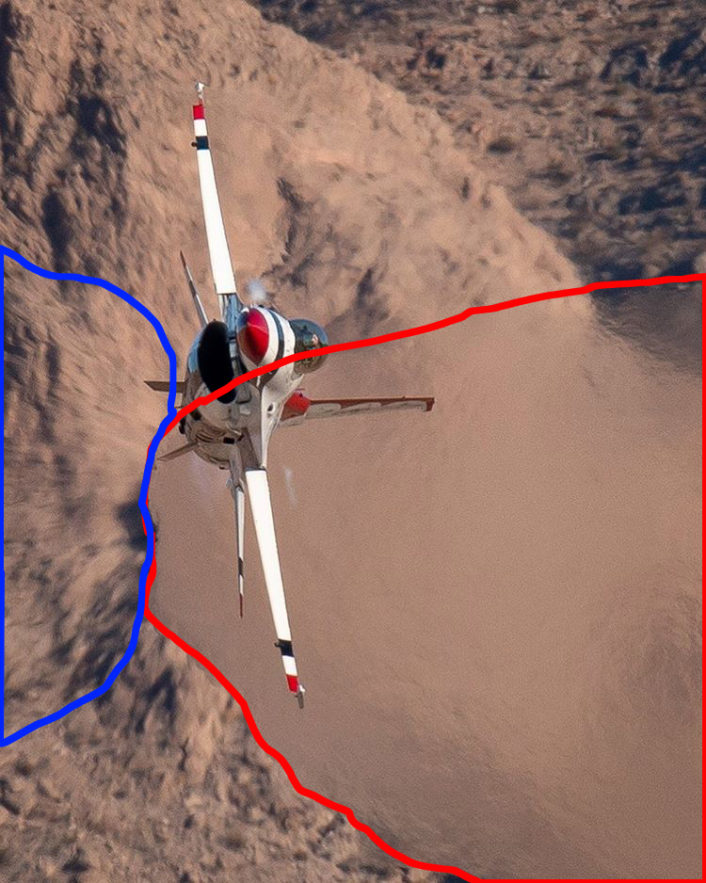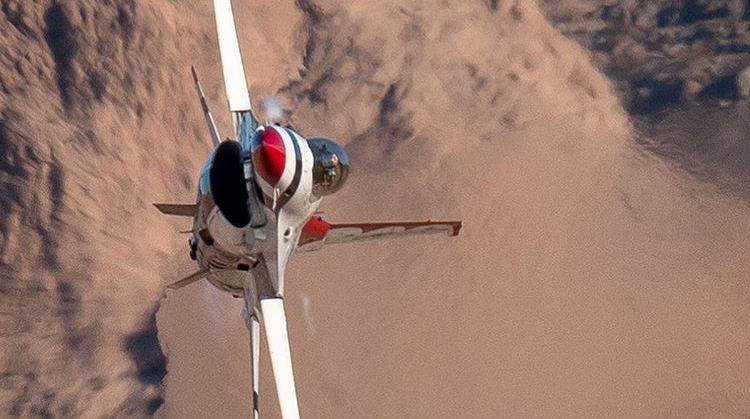The visible distortion around the belly of the aircraft (left side of the photo) is caused by the shock waves that distort light as if it was entering a new medium.
As we already explained in the past, an aircraft maneuvering at high-speed through the air creates a pressure gradient that generates shock waves at speed much lower than the speed of sound: shock waves are generated by the interaction of two bodies of gas at different pressure, with a shock wave propagating into the lower pressure gas and an expansion wave propagating into the higher pressure gas.
Unlike heat from the aircraft exhaust, that tends to “blur” the area/background around the engine, shock waves distort the light in straight lines: you will probably remember the photo we published last year of an F-35 flying through the famous Jedi Transition, aka “Star Wars Canyon”, with visible light distortion at the belly of the aircraft. That peculiar straight distortion was caused by the shock waves around the aircraft.
A pretty common mistake is to believe that shock waves are generated only at transonic or supersonic speeds.
This is how I addressed this in the comment at the F-35 shot mentioned above:
At speed lower than the transonic region, air flows smoothly around the airframe; in the transonic region, airflow begins to reach the speed of sound in localized areas on the aircraft, including the upper surface of the wing and the fuselage: shock waves, generated by pressure gradient resulting from the formation of supersonic flow regions, represent the location where the air moving at supersonic speed transitions to subsonic. When the density of the air changes (in this case as a consequence of shock waves) there is a change in its refractive index, resulting in light distortion.
Another example of shock waves distortion is in the image below. Taken on Day 1 of Aviation Nation air show at Nellis Air Force Base, by photographer Sam Martinez, it shows Thunderbird #6, Opposing Solo Maj. Michelle Durran, during the max g turn.
If you look at the left side of the image you can clearly see the shock wave distortion. To make it clear where you have to look, I’ve also highlighted the different light distortion regions in the version of the shot below.

A similar shot was taken by Colin Moeser, who happened to be close to Sam Martinez. The distortion is clearly (if not more) visible in the cool image that you can see here below:
H/T to Stefano D’Urso for spotting the great capture from Sam Martinez. Make sure you follow Sam on Instagram for more cool shots: @sactownavphoto.









